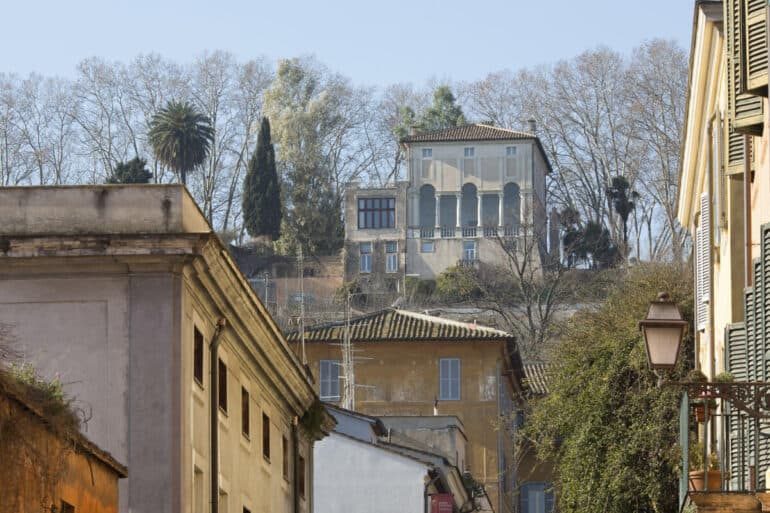A Renaissance work of art, right on top of the Gianicolo
It is no wonder the building that now houses the Finnish Institute in Rome is the work of one of Raphael’s pupils, Giulio Romano. Built by the Lante family in the Renaissance period, Villa Lante al Gianicolo is a stunning building that greets its visitors with original wall frescos and a vast ceiling mural created for the first aristocratic family.
Although the foundation of the Institutum Romanum Finlandiae is relatively recent compared to other foreign academies in Rome, the history of Villa Lante is eventful and it dates back to 1519 when the construction works started. Already in the 16th century, ages before climate change was a widely known phenomenon, Baldassari Turini, datarius of Pope Leo X, was complaining about the weather in Rome.
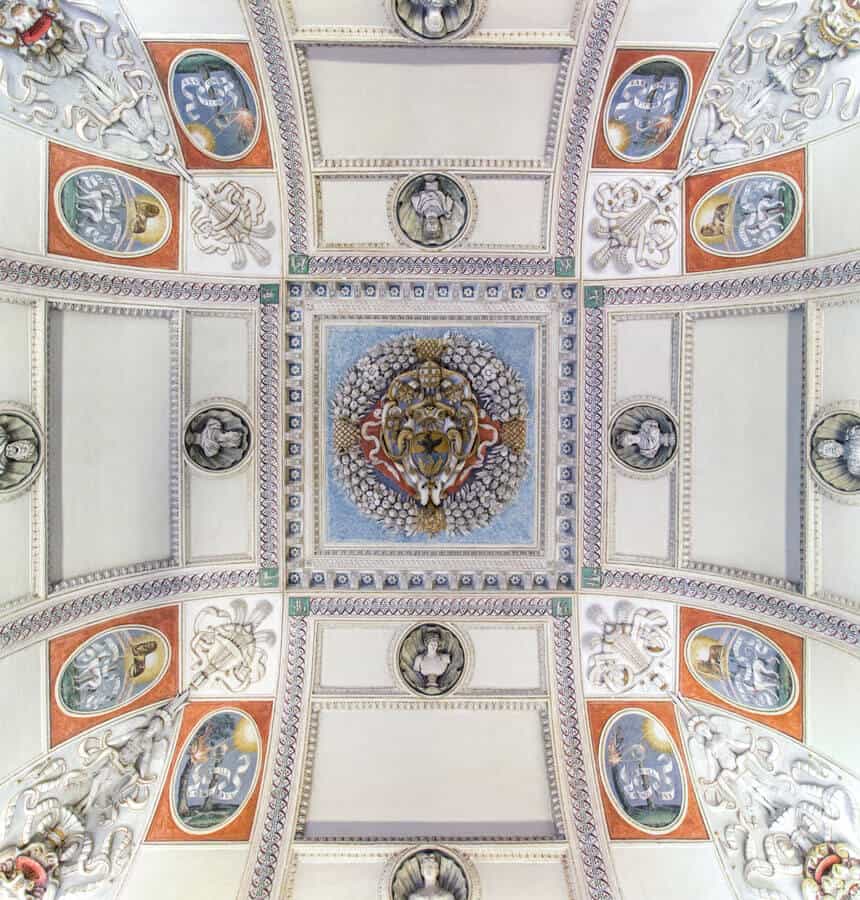
Summer heat can be a problem in Rome, we all know that.
Why not buy a couple of hectares of land to hide from the canicola? This was exactly Turini’s idea: from the Lante family (who were merchants from Pisa), he acquired some fields on the top of the Gianicolo, covered it with gardens and vineyards (to maintain some sort of microclimate) and built a mansion. Giulio Romano, architect of the complex, designed the internal and external spaces, creating a perfect environment to meditate and discuss art.
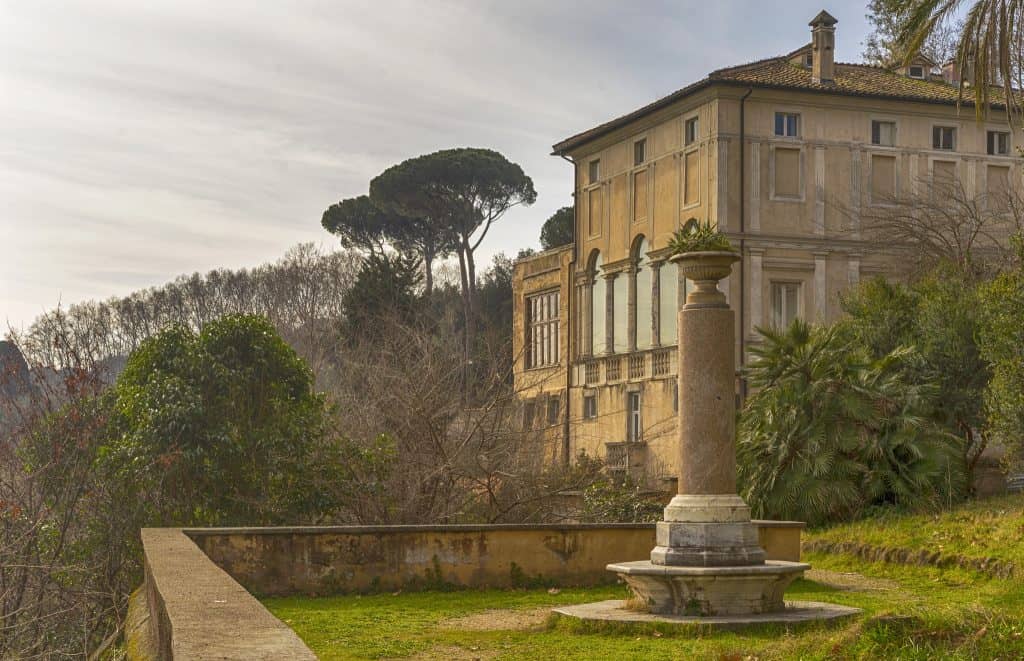
History revealed itself under the roof of Villa Lante
The unusual graffiti on the walls of the loggia, stating: “a dì 6 maggio 1527 fo la presa di Roma,” remind us about the so-called Sacco di Roma, the occupation of the city by mercenary troops under the command of Emperor Charles V in 1527; since then the destiny of the Villa has been closely connected to several political and diplomatic personalities. From Georges d’Armagnac, French Ambassador to Prince Camillo Borghese (Pauline Bonaparte’s husband) and German archaeologist Wolfgang Helbig who rented Villa Lante in 1887 and used it as an authentic cultural centre, gathering musicians, artists and members of the high society.
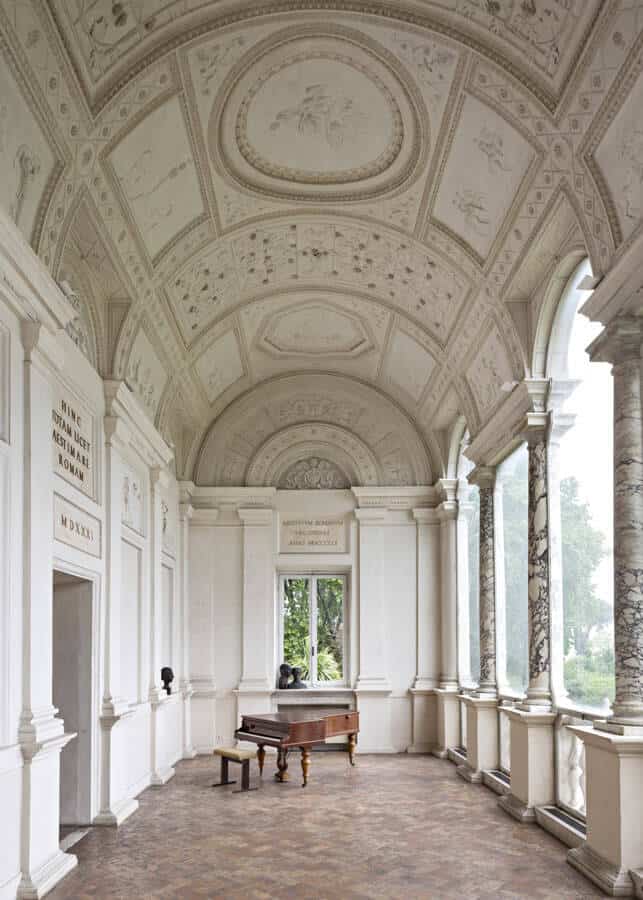

The Finnish Imprint: a close-knit community promoting cultural networks across Europe
In 1950, Amos Anderson, a Finnish businessman and patron of the arts, provided a donation for the building and started the institute to allow Finnish people to study and do research in Rome, opening its doors in 1954. The central activities of the institute are research and education, particularly in the classical studies.
The main disciplines are ancient and medieval history, classical philology, classical archaeology, and art history. Furthermore, the institute also hosts monthly lectures, concerts, conferences, and other cultural happenings, including the annual concert series L’Orecchio di Giano. (See website for full details.)
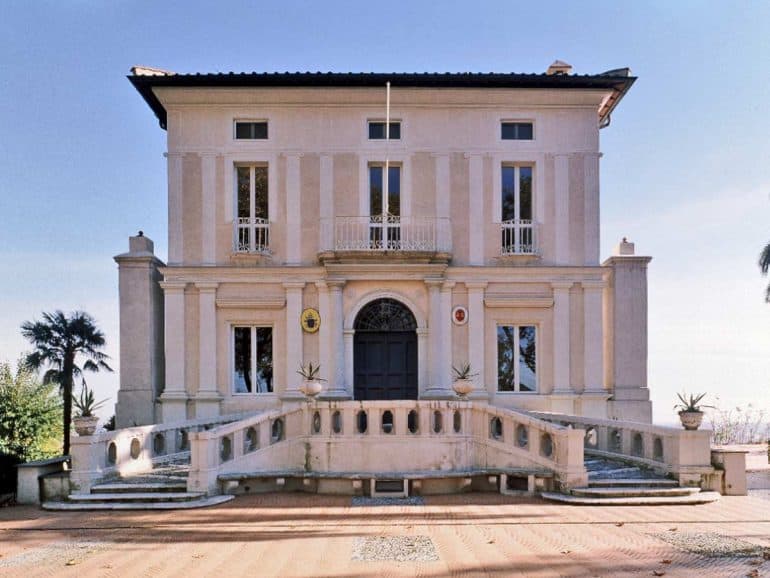
INSTITUTUM ROMANUM FINLANDIAE
Passeggiata del Gianicolo, 10
Visiting Hours (booking is required)
Mon – Fri 9:00 – 12:00
Admission to the library by appointment: orma@irfrome.org


